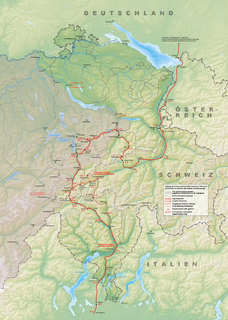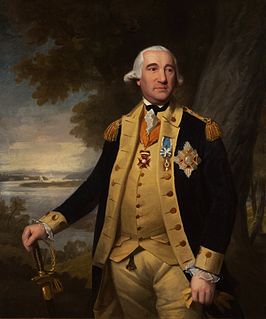
A battle is an occurrence of combat in warfare between opposing military units of any number or size. A war usually consists of multiple battles. In general, a battle is a military engagement that is well defined in duration, area, and force commitment. An engagement with only limited commitment between the forces and without decisive results is sometimes called a skirmish.

The Black and Tans were constables recruited into the Royal Irish Constabulary (RIC) as reinforcements during the Irish War of Independence. Recruitment began in Great Britain in January 1920 and about 10,000 men enlisted during the conflict. The vast majority were unemployed former British soldiers from Britain who had fought in the First World War. Some sources count a small number of Irishmen as 'Black and Tans'.

Carl Philipp Gottfriedvon Clausewitz was a Prussian general and military theorist who stressed the "moral", in modern terms meaning psychological, and political aspects of waging war. His most notable work, Vom Kriege, was unfinished at his death.

Arthur Wellesley, 1st Duke of Wellington, was an Anglo-Irish soldier and Tory statesman who was one of the leading military and political figures of 19th-century Britain, serving twice as prime minister of the United Kingdom. He is among the commanders who won and ended the Napoleonic Wars when the coalition defeated Napoleon at the Battle of Waterloo in 1815.

Vom Kriege is a book on war and military strategy by Prussian general Carl von Clausewitz (1780–1831), written mostly after the Napoleonic wars, between 1816 and 1830, and published posthumously by his wife Marie von Brühl in 1832. It is one of the most important treatises on political-military analysis and strategy ever written, and remains both controversial and influential on strategic thinking.
In modern use, the order of battle of an armed force participating in a military operation or campaign shows the hierarchical organization, command structure, strength, disposition of personnel, and equipment of units and formations of the armed force. Various abbreviations are in use, including OOB, O/B, or OB, while ORBAT remains the most common in the United Kingdom. An order of battle is distinct from a table of organisation, which is the intended composition of a given unit or formation according to the military doctrine of its armed force. Historically, an order of battle was the order in which troops were positioned relative to the position of the army commander or the chronological order in which ships were deployed in naval situations.

Jean-Étienne Vachier Championnet, also known as Championnet, led a Republican French division in many important battles during the French Revolutionary Wars. He became commander-in-chief of the Army of Rome in 1798 and of the Army of Italy in 1799. He died in early 1800 of typhus. His name is one of the names inscribed under the Arc de Triomphe, on Column 3.

The siege of Kut Al Amara, also known as the first battle of Kut, was the besieging of an 8,000 strong British Army garrison in the town of Kut, 160 kilometres (100 mi) south of Baghdad, by the Ottoman Army. In 1915, its population was around 6,500. Following the surrender of the garrison on 29 April 1916, the survivors of the siege were marched to imprisonment at Aleppo, during which many died. Historian Christopher Catherwood has called the siege "the worst defeat of the Allies in World War I". Ten months later, the British Indian Army, consisting almost entirely of newly recruited troops from Western India, conquered Kut, Baghdad and other regions in between in the Fall of Baghdad.
The fog of war is the uncertainty in situational awareness experienced by participants in military operations. The term seeks to capture the uncertainty regarding one's own capability, adversary capability, and adversary intent during an engagement, operation, or campaign. Military forces try to reduce the fog of war through military intelligence and friendly force tracking systems. The term has become commonly used to define uncertainty mechanics in wargames.
Attrition warfare is a military strategy consisting of belligerent attempts to win a war by wearing down the enemy to the point of collapse through continuous losses in personnel and materiel. The word attrition comes from the Latin root atterere, meaning "to rub against", similar to the "grinding down" of the opponent's forces in attrition warfare.
The French Revolutionary Wars continued from 1795, with the French in an increasingly strong position as members of the First Coalition made separate peaces. Austria and Great Britain were the main remaining members of the coalition. The rebellion in the Vendée was also finally terminated by General Hoche.
The French Revolutionary Wars continued from 1799 with the French fighting the forces of the Second Coalition. Napoleon Bonaparte had returned from Egypt and taken control of the French government. He prepared a new campaign, sending Moreau to the Rhine frontier and personally going to take command in the Alps, where French forces had been driven almost out of Italy in 1799.

The Waterloo campaign was fought between the French Army of the North and two Seventh Coalition armies, an Anglo-allied army and a Prussian army. Initially the French army was commanded by Napoleon Bonaparte, but he left for Paris after the French defeat at the Battle of Waterloo. Command then rested on Marshals Soult and Grouchy, who were in turn replaced by Marshal Davout, who took command at the request of the French Provisional Government. The Anglo-allied army was commanded by the Duke of Wellington and the Prussian army by Prince Blücher.
The concept of absolute war was a theoretical construct developed by the Prussian military theorist General Carl von Clausewitz in his famous but unfinished philosophical exploration of war, Vom Kriege. It is discussed only in the first half of Book VIII and it does not appear in sections of the text written later. This indicates that it was an experiment that failed and was meant to be dropped.

The Italian and Swiss expedition of 1799 was a military campaign undertaken by a combined Austro-Russian army under overall command of the Russian Marshal Alexander Suvorov against French forces in Piedmont and Lombardy and the Helvetic Republic. The expedition was part of the Italian campaigns of the French Revolutionary Wars in general, and the War of the Second Coalition in particular. It was one of 'two unprecedented Russian interventions in 1799', the other being the Anglo-Russian invasion of Holland.

Ethnic Germans served on both sides of the American Revolutionary War. Large numbers of Germans had emigrated to Pennsylvania, New York and other American colonies, and they were generally neutral or supported the Patriot cause. Some belonged to pacifist sects such as the Amish, but many were drawn into the Revolution and the war.
Panzer-Division Clausewitz was a German panzer division during World War II, named for Carl von Clausewitz.
In the Battle of Magnano on 5 April 1799, an Austrian army commanded by Pál Kray defeated a French army led by Barthélemy Schérer. In subsequent battles, the Austrians and their Russian allies drove the French out of nearly all of Italy. This action was fought during the War of the Second Coalition, part of the French Revolutionary Wars.

The French invasion of Russia, also known as the Russian campaign, the Second Polish War, the Army of Twenty nations, and the Patriotic War of 1812 was launched by Napoleon Bonaparte to force the Russian Empire back into the continental blockade of the United Kingdom. Napoleon's invasion of Russia is one of the best studied military campaigns in history and is listed among the most lethal military operations in world history. It is characterized by the massive toll on human life: in less than six months nearly a million soldiers and civilians died.

The South African Native Labour Corps (SANLC) was a force of workers formed in 1916 in response to a British request for workers at French ports. About 25,000 South Africans joined the Corps. The SANLC was utilized in various menial noncombat tasks. The SANLC was disbanded by the South African government in January 1918.











